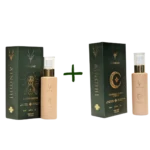This pursuit not only allows you to explore the rich flavors and aromas of various grapes but also offers the joy of creating something truly unique.
Whether you are a novice eager to make your first batch or an enthusiast looking to refine your skills, the key to successful winemaking lies in understanding the fundamental processes and the essential equipment needed.
With dedication and a bit of patience, you can transform simple ingredients into extraordinary wines that reflect your personal taste and style.
Understanding Wine Cellaring
Creating the perfect wine starts with understanding the nuanced art of cellaring.
A wine cellar is more than just a storage space; it’s an environment specifically designed to optimize the aging process of wine.
Proper cellaring helps maintain the wine’s quality, enhances its flavors, and allows it to mature gracefully over time.
- The Role of Temperature and Humidity: Maintaining a consistent temperature and humidity level is crucial in a wine cellar. The ideal temperature range is between 50-57°F, and humidity should be around 60-70%. These conditions ensure that wines age slowly and develop complexity without the risk of drying out the cork or promoting mold growth.
- Protection from Light and Vibration: Wines are sensitive to light and vibration, both of which can accelerate aging and degrade the wine’s quality. Cellars should be dark or have minimal lighting, and bottles should be kept in a stable, vibration-free environment to preserve their integrity over time.
- Organization and Accessibility: Efficient organization within a cellar not only maximizes space but also makes it easier to manage your wine collection. Wines should be cataloged and arranged in a way that makes them easily accessible, with labels facing up to avoid unnecessary movement and disturbance
Wine Aging
Aging wine is a transformative process that enhances its taste and aroma. While not all wines are made to age, those that do can develop more nuanced flavors and aromas over time.
- Chemical Changes During Aging: As wine ages, chemical reactions occur between acids, sugars, and compounds known as phenolics. These reactions can lead to the development of new flavors and aromas, such as nutty, spicy, or woody notes, which are not present in younger wines.
- Choosing the Right Wine for Aging: Not all wines benefit from long-term aging. Typically, wines with higher levels of tannins, acidity, and alcohol are better candidates for aging. These components act as preservatives, allowing the wine to evolve favorably in the cellar.
- Timing and Patience: The aging process can vary widely, ranging from a few years for white wines to decades for some reds. The key to successful aging is patience and timing; knowing when a wine has reached its peak and is ready to drink is as much an art as it is a science.
By understanding the principles of wine cellaring and the process of aging, you can greatly enhance your winemaking and ensure that each bottle reaches its fullest potential.
Choosing The Right Grapes For Winemaking
Selecting the appropriate grapes is fundamental to crafting exceptional wine.
This decision shapes the wine’s flavor, aroma, and overall character, making it crucial to understand the different variables that influence grape quality and suitability.
Understanding Grape Varieties And Climate Influence
The choice of grape variety is pivotal and should align with the climatic conditions of the region where they are grown.
Cool climate regions like Germany and Oregon are renowned for producing light-bodied wines with high acidity and distinct fruit flavors, making varieties such as Riesling and Pinot Noir ideal.
In contrast, warm climates like those in Australia and Argentina favor full-bodied wines with rich fruit flavors, making varieties like Cabernet Sauvignon and Merlot more suitable.
Importance Of Soil Type
Soil composition plays a critical role in the development of grapes. Different soil types, such as sandy, clay, and loam, offer varying benefits.
For instance, sandy soils, which are well-draining, tend to produce light-bodied wines with low tannins, whereas clay soils, which retain more water, are beneficial for producing full-bodied wines with high tannins.
Choosing Grapes Based On Wine Style
The desired style of wine also dictates the choice of grapes. If a more robust, tannic wine is the goal, grapes that have undergone longer maceration periods, where the skins are left in contact with the juice to extract tannins and colors, are preferable.
This is typical for red wines. For lighter, less tannic wines, a shorter pressing and less contact with skins is advised.
Selecting High-Quality Grapes
When purchasing grapes, it’s essential to inspect their quality meticulously. Look for grapes that are firm, plump, and free from visible signs of mold or rot.
The sugar and acid levels of the grapes should also be tested, as these will influence the fermentation process and the balance of the final product.
Consider The Source
Finally, the source of your grapes can significantly impact the quality of your wine.
Opt for reputable suppliers known for their high-quality grapes and proper handling procedures. If possible, sourcing grapes from local vineyards can ensure freshness and support sustainable practices.
Key Takeaway
Starting your winemaking journey involves a mix of artistry and science, with careful attention to details like grape selection, cellaring, and aging.
Each aspect, from choosing the right grapes that match your regional climate and soil, to understanding the delicate balance required in cellaring and aging, plays a pivotal role in the creation of a delightful wine.
By selecting high-quality grapes, controlling the cellar environment, and patiently aging your wine, you ensure that each bottle reaches its full potential.
As you embark on this rewarding endeavor, let creativity guide your winemaking process, transforming simple ingredients into expressions of your unique taste.







